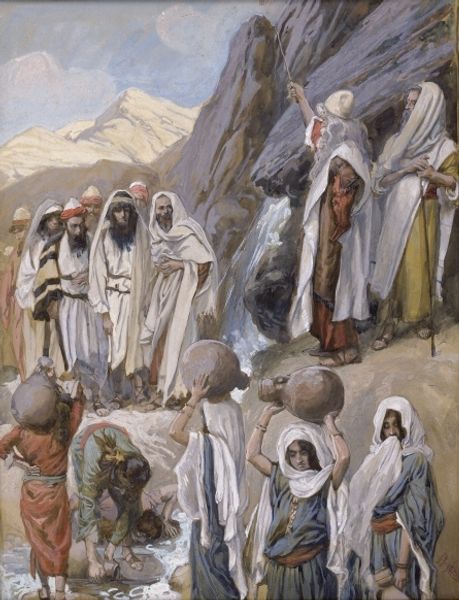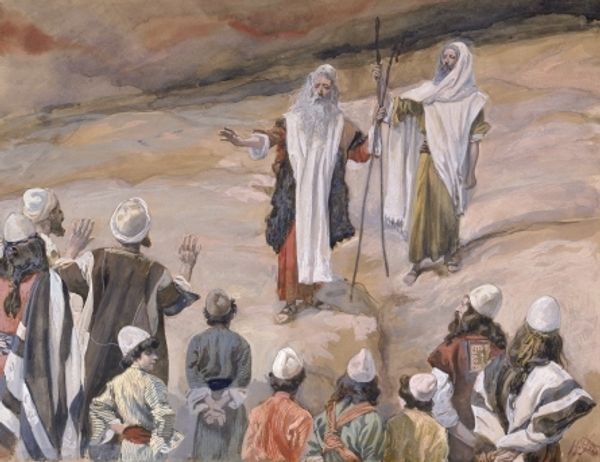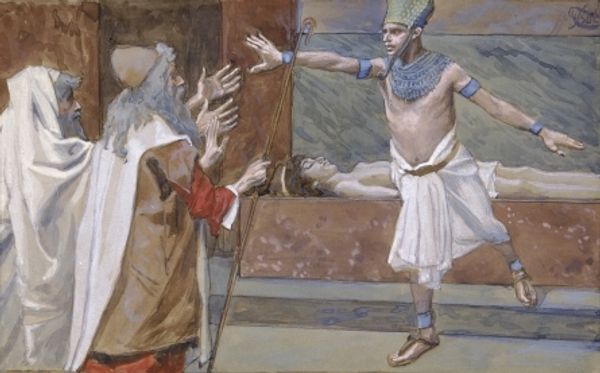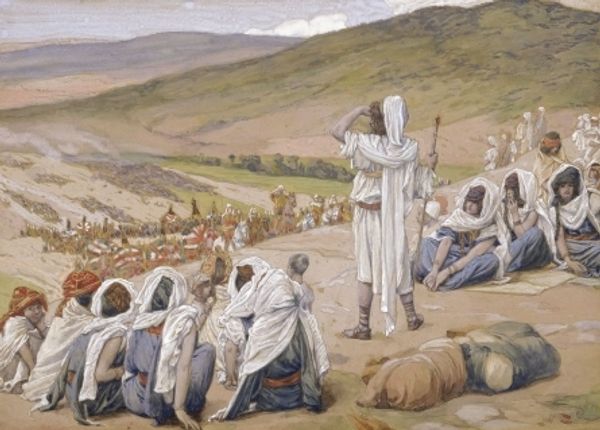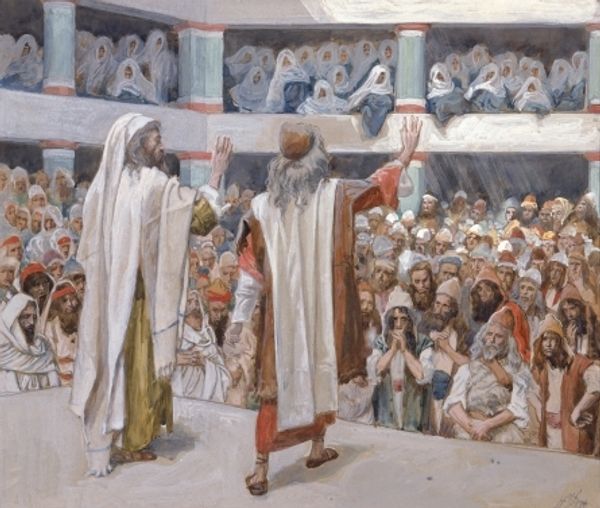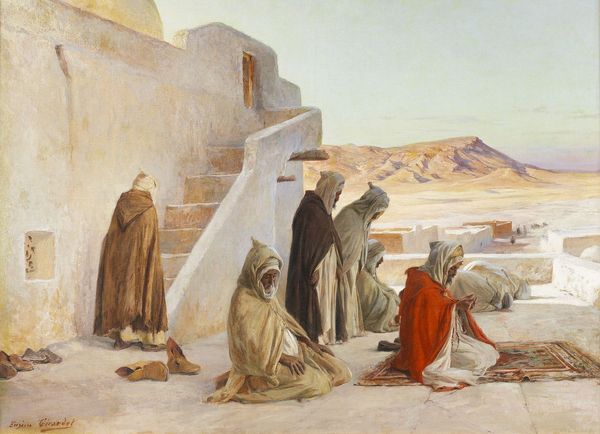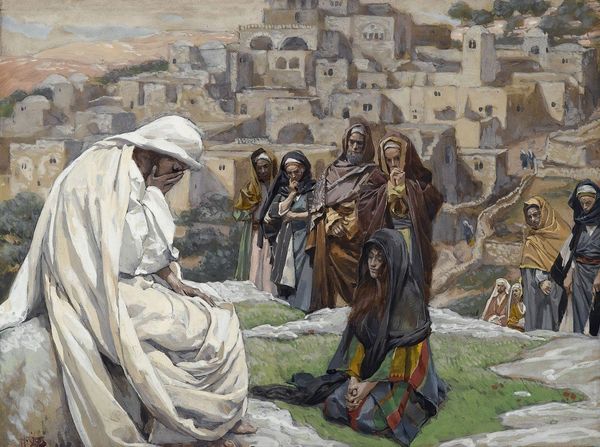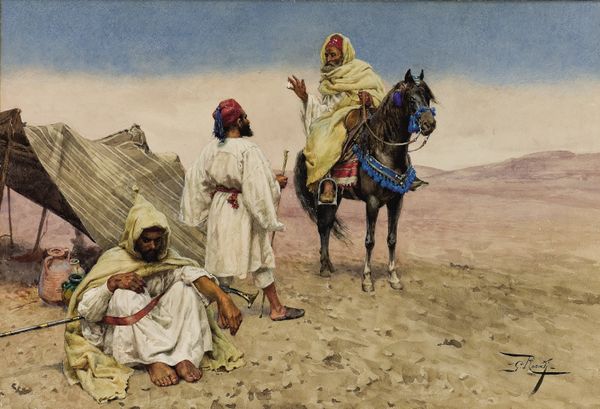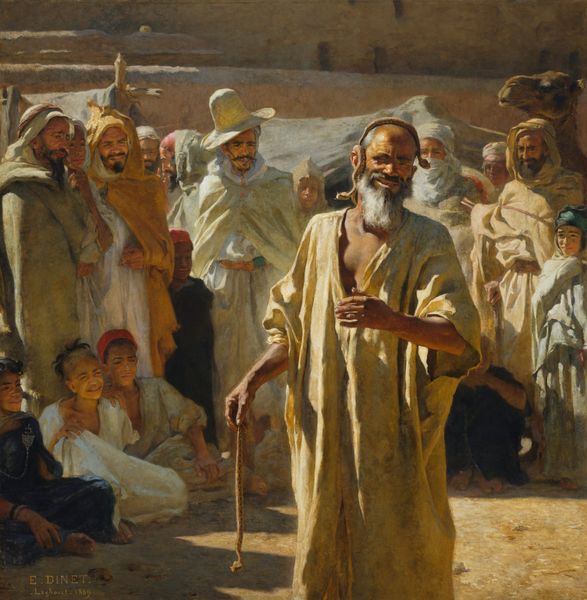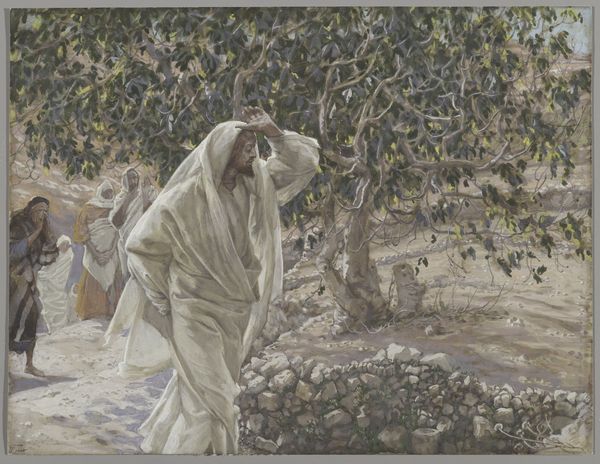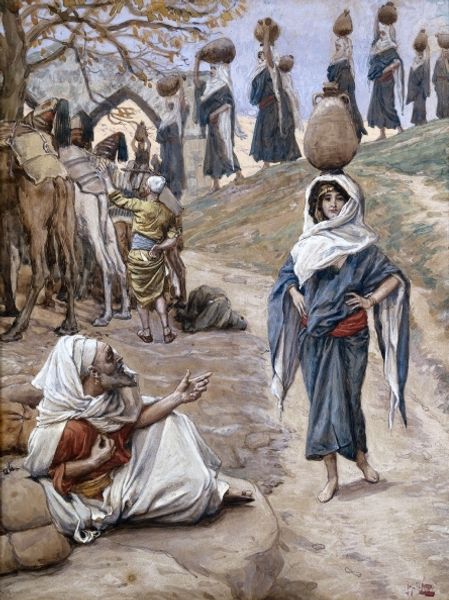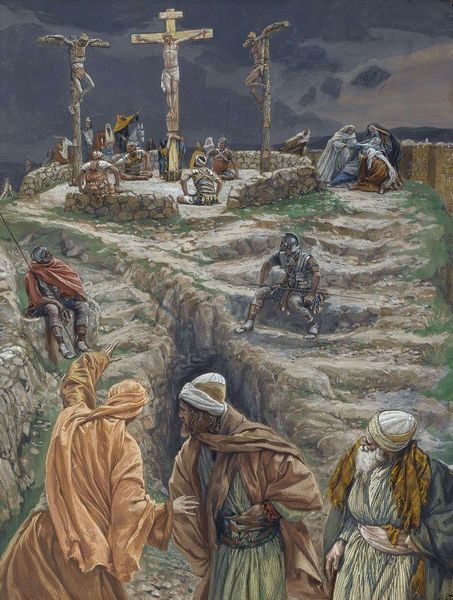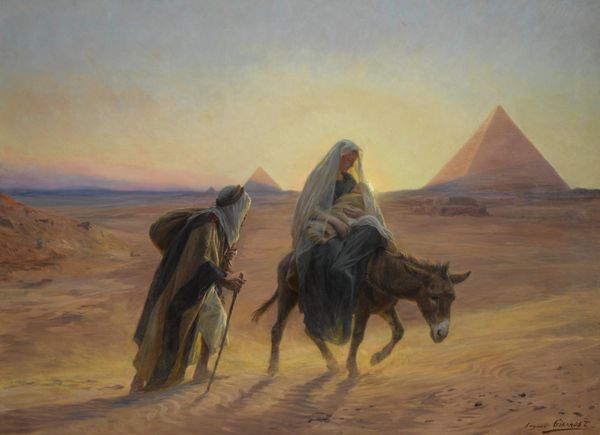
painting, oil-paint
#
narrative-art
#
painting
#
oil-paint
#
figuration
#
oil painting
#
portrait reference
#
history-painting
Dimensions: 20.7 x 27 cm
Copyright: Public domain
Curator: James Tissot’s oil on canvas piece, created in 1902, presents a striking scene titled "The Dead Bodies Carried Away." Editor: Right away, I get this overwhelming feeling of weight, of burden. The figures, slumped and lifeless, contrasted against the sterile white of the carriers’ garments, it’s powerfully unsettling. Curator: Indeed. The composition draws the eye to the stark horizontal lines of what appear to be tents in the background. The muted palette further emphasizes the somber tone. Semiotically, the act of carrying speaks to duty, but the lifelessness negates any triumphant narrative. Editor: There's an almost frantic energy in the way the bearers are positioned. It’s as if they are caught between supporting these bodies and struggling against an invisible force. It kind of gives me chills, as if these folks might collapse at any second under the strain. Curator: Note the careful rendering of fabrics, contrasting sharply with the stiff postures of the carried individuals. This divergence in texture guides the viewer’s emotional response, positioning us to contemplate the burden of mortality. Tissot invites a reading deeply rooted in empathy and visual metaphor. Editor: But the context! I can’t help but wonder, what calamity befell these people? Why this desperate carrying of bodies? It invites such grim speculation, that narrative pull almost overwhelms any appreciation I could have for the artist’s craft. Curator: Agreed. The absence of clear contextual cues intensifies the visual weight of the composition itself. Through considered use of color, form and representational technique, we see a complex examination of physical labor and death. Editor: So, the formal tension mirrors that emotional uncertainty—interesting! Suddenly the visual weight of their white gowns and blank stares says so much about communal burden and trauma. Curator: Precisely. Tissot transforms the tableau from a mere depiction to an analytical assessment. Editor: Looking at this one certainly stays with you. Its darkness somehow illuminates how linked the human experience of pain and caregiving can be.
Comments
No comments
Be the first to comment and join the conversation on the ultimate creative platform.

